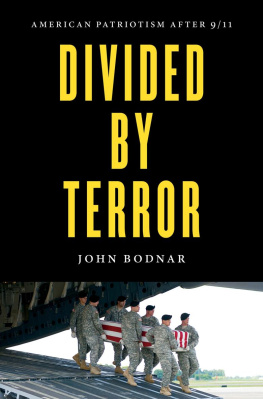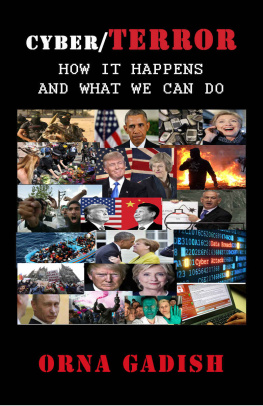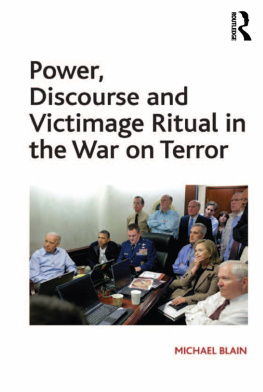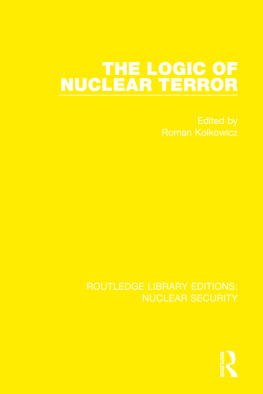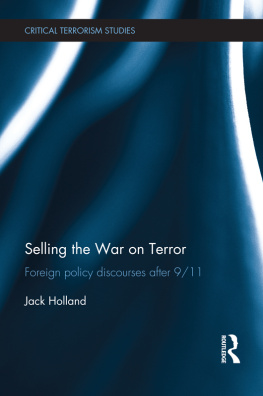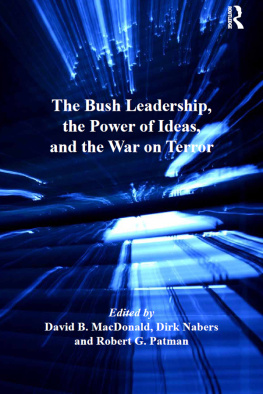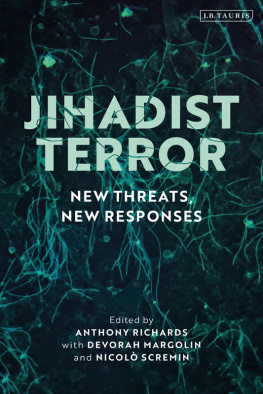MONSTERS TO DESTROY
MONSTERS TO DESTROY
The Neoconservative War on Terror and Sin
Ira Chernus
First published 2006 by Paradigm Publishers
Published 2016 by Routledge
2 Park Square, Milton Park, Abingdon, Oxon OX14 4RN
711 Third Avenue, New York, NY 10017, USA
Routledge is an imprint of the Taylor & Francis Group, an informa business
Copyright 2006, Taylor & Francis.
All rights reserved. No part of this book may be reprinted or reproduced or utilised in any form or by any electronic, mechanical, or other means, now known or hereafter invented, including photocopying and recording, or in any information storage or retrieval system, without permission in writing from the publishers.
Notice:
Product or corporate names may be trademarks or registered trademarks, and are used only for identification and explanation without intent to infringe.
Library of Congress Cataloging-in-Publication Data
Chernus, Ira, 1946
Monsters to destroy : the neoconservative war on terror and sin / Ira Chernus.
p. cm.
ISBN-13: 978-1-59451-275-9 (hc)
ISBN-10: 1-59451-275-2 (hc)
ISBN-13: 978-1-59451-276-6 (pb)
ISBN-10: 1-59451-276-0 (pb)
1. Bush, George W. (George Walker), 1946Political and social views. 2. ConservatismUnited States. 3. Political cultureUnited States. 4. United StatesForeign relations2001 5. United StatesForeign relationsPhilosophy. 6. United StatesPolitics and government2001 7. United StatesPolitics and governmentPhilosophy. 8. Messianism, PoliticalUnited States. 9. War on Terrorism, 2001 I. Title.
E902.C3646 2006
973.931dc22
2006011993
Designed and Typeset by Straight Creek Bookmakers.
ISBN 13 : 978-1-59451-275-9 (hbk)
ISBN 13 : 978-1-59451-276-6 (pbk)
For Kathy
[America] goes not abroad in search of monsters to destroy. By once enlisting under other banners than her own, were they even the banners of foreign independence, she would involve herself beyond the power of extrication, in all the wars of interest and intrigue, of individual avarice, envy, and ambition, which assume the colors and usurp the standard of freedom. The fundamental maxims of her policy would insensibly change from liberty to force. She might become the dictatress of the world. She would be no longer the ruler of her own spirit.
John Quincy Adams, July 4, 18211
Our enemies are innovative and resourcefuland so are we. They never stop thinking about new ways to harm our country and our peopleand neither do we.
George W. Bush, August 5, 20042
NOTES
. Adams, An Address Celebrating the Aniversary of Independence, at the City of Washington on the Fourth of July 1821, 45.
. President Gaffes in Terror Speech, http://news.bbc.co.uk/2/hi/americas/3541706.stm.
Contents
The terrible attack of September 11, 2001, raised Americas concerns about national security to new heights. Yet George W. Bush and his neoconservative advisors responded to the attack with policies that are likely to make America less secure. Why? This book offers a part of the answer, beginning with a simple observation. The Bush administration does not treat the attackers of 9/11, and those who might be attackers in the future, as real human beings. It treats them as the villains in a story, as monsters who must be destroyed.
The president and the neoconservatives have produced a huge body of public words about the monsters and the need to destroy them. Those words fall into patternsI call them storiesabout themselves, their ideals, their motives, and their policies. Every government policy begins with a story; the choices made by policymakers depend on the stories they tell themselves and others. Their stories have immense power. They create the narrative framework within which U.S. policy is enacted, explained, rationalized, and justified. Everyone hears the administrations stories of terror and response to terror, and many millions believe them, or at least take them quite seriously. Yet the underlying structure and implications of the prevailing stories remain little studied and poorly understood.
The president and his advisors were telling stories about monsters and terror long before the tragedy of 9/11. But the terror they told of was not perpetrated by foreign attackers. It was the terror so many Americans feel here at home as (in Bushs own words) a whirlwind of changesocial, cultural, and economic changeseems to sweep away the foundations of their lives. Their tales all had the same plot. Change appeared in the guise of moral evil. The monsters were Americas sinners, the liberals and secular humanists. The antidote to sin was a life firmly founded on moral values that are unshakable because they come from an authoritative source beyond the individual. I call this attitude conservative moralism.
Since 9/11, the Bush administration has gone on telling these conservative moralist stories about the terrors of change at home. But it has also found a much wider audience for them by projecting the plot onto a foreign stage. Now the terror is said to come from faraway places, and the monsters are likely to have Arabic or Persian names. But the fundamental structure of the stories has not changed. To understand the deepest roots of the Bush administrations war on terrorism, we must dig deeply into the world of conservative moralism. Thats where the wars roots are buried and nurtured.
This book is my story about the Bush administrations stories. The punch line of my story is that the administration has chosen unending warfare as its route to escape from moral terror. The main goal of the war on terrorism is not to end anti-American attacks. The main goal is to give Americans a global arena where they can show their moral strength, their allegiance to permanent moral values, and their ability to hold back the whirlwind of change. To prove all that, Americans need to be fighting against sin, evil, and moral weakness; they need monsters to destroy. So the point of the war is not to win. It is, on the contrary, to keep on fighting monsters forever.
This is obviously a self-defeating approach. It is a vast effort to make the nation more secure, but inevitably it ends up making the nation more insecure. It makes the United States a national insecurity state. But people often go on acting out old familiar stories that make them feel secure, rather than acting out new stories that might actually make them more secure.
By the spring of 2006, many observers were suggesting that the neoconservatives had lost much of their influence in the Bush administration. The growing drumbeat for an attack on Iran (perhaps even a nuclear attack) made this assessment seem debatable, at best. Yet even if the neocon influence has faded around the edges of Bush policy, the core of that policy still bears their stamp powerfully and pervasively. And the neocons have shown, over decades, their persistent drive to dominate U.S. foreign policy. They will surely not go away, even after George W. Bush is gone from the White House. So the roots and branches of their story still deserve careful attention.
It would be wrong, though, to place all the blame on the president and the neoconservatives. No government can fight a long-term war without substantial public support. Despite criticism on specifics (notably the war in Iraq), the American public has given substantial support to the administrations overall project of an open-ended war on terrorism. Most conservative moralists find it easy to support the story of the war on terrorism, because that story so closely mirrors their own stories about a domestic war on sin and secular humanism.


